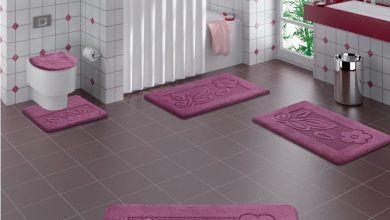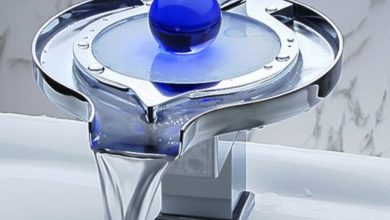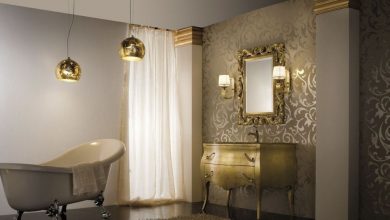In our modern times, we have bathrooms, even very innovative ones. Don’t they make you wonder how people used to bath in the past? They definitely did not access water as easily as we do nowadays, but, for sure, they had their ways of bathing. Hygiene should be a vital part of the existence of human beings. Being unclean causes a lot of problems and diseases that can lead to death altogether. Over and beyond, some religious rituals and social standards obligated people to wash before mixing with the community. Let us take you in a quick dive into what the history embraces regarding the bathing facts, and learn how people used to bath long before there were bathtubs.
THE BEGINNING OF BATHING
In the past, people were not that aware of the importance of showering. Because, at the end of the day, medicine was not that advanced, so nobody knew about how hygiene could affect our health if not properly maintained. Surprisingly, people in the past believed that bathing was a ritual thing that got people close together rather than a private matter. Human connections were built through bathing times at some point in history. Showers developed at some time through the centuries; interestingly, the ancient Greeks were the first to develop them and introduce this concept to the world. Greece was the first place to have pipes that pour water over people. Later, Romans decided to take things a bit further, so they renovated the pipe systems and supplied ones that could be used indoors. They were probably the ones who believed that privacy was intriguing and needed to be addressed when it comes to bathing. Before the pipes thing showed up, there were public bathhouses that acted like modern spas. People met there for massages, body washing, exercising, and socializing as well.
1 The Ancient Times
In the ancient times, the Roman era in particular, before revamping the pipes, people had the “Aquae Sulis”. It means The City of Bath, and its location is now England. There were lots of water systems; they were urbane and classy. Moreover, the place contained public baths that were provided with hydrothermal springs.
During the prehistoric times, there were still neither bathtubs nor water pipes. Thus, natural waters of seas and rivers were the purest form of body washing and cleaning. That was between the 3000 and 2000 B.C. The best type of showers lied in the waterfalls. Probably, the latter was the reason of evoking the idea of water pouring over people’s head for showering. Throughout the years, communities started to form and develop, therefore, people began building standards and notions.
Since the idea of private baths was still inaccessible, people became accustomed to public baths. All the years through 1500 B.C, public baths were still going on even in the most ancient societies. Ancient Egyptians emphasized the importance of washing. Over and beyond, they also applied cosmetics. It was a societal and religious thing; they used to believe that those who kept themselves clean were the closest to the gods. Even before burying a dead body, they used to bath it and apply makeup, so the deceased would be clean and presentable during the Judgement. People in Egypt, in particular, considered washing a sacred practice that they were washing several times a day. Some people even washed before and after meals.
As the time went by, people in the ancient times started learning about private showering. However, it was something that only rich people had access to. Their servants would pour cold water over their masters’ bodies for a bath. Private showers and indoor plumbing started appearing in gymnasiums in 500 B.C. The reason behind that was the fact that the word “gymnos” was a Greek term that means naked. Athletic men used to participate in public games and show off their bodies. Then they had places to take showers and bathe, and it was usually inside their training areas- gymnasiums.
2 The Medieval Times
During the medieval times, the indoor plumbing became misused, and people abandoned them for long years and centuries. Besides, public baths, as well as private ones, started to fade away throughout the years until Europe, and most of the world got back into a state of uncleanliness. For that reason, there is a common belief that Europe in the Medieval era was full of filth and dirt. More surprisingly, Catholic Churches disapproved the existence of public bathhouses; however, they kept existing that even people partied and had dinner in them. There were also musicians who attended the baths as means of entertainment inside the baths; there were also places where people engaged in sexual acts.
In the 14th century, bathing was something that people developed a fear of. The reason behind that was the spread of plague, known as the Black Death. They used to believe that showering opened their pores. Thus they could be infected easily. Hence, people preferred having their bodies covered in dirt and filth; they thought a solid layer of grime would keep them safe from catching the plague that was spreading at that time. The idea of not bathing spread among people and almost everyone stopped washing to avoid death; bathing was a synonym for death back then.
While the medieval era was far away from bathing and showering, some people continued bathing. The reason why some people did, while others did not depended on their personal preferences and wealth. The spot of the world you came from was a central factor as well. Some places had their people bath only like four or five times per year.
3 The Modern Times
Strangely enough, after the development of the idea of bathing, things had declined once again. The Romans developed showers, constructed buildings for heating, and made use of the hot springs. They also invented different means that helped them transport water from one place to another, including the indoor plumbing. When the world started getting civilized, things had changed, and showering regained its significant position.
In the 18th century, bathing and hygiene became as significant as they were in the ancient times. People became healthier and more aware of the importance of bathing. In fact, medicine, at that time, discovered that cold water and bathing could be the cure for some diseases. So, a lot of people started bathing by that time. They definitely used the same methods that were developed during the ancient times; public baths or waters that were provided through indoor plumbs. In 1767, the first technical shower was brought into being. They used devices that were placed over the head and poured water over people; vessels were also used at the time, and whoever wanted to shower had to pull a chain so the vessel would release water and pour it over their bodies. In the 1800’s, England showed interest in reviving the old methods of bathing that were used by the ancient Romans and the Turkish. They opened public baths again, and the first modern public baths took place in Liverpool in 1829.
In the early 1900’s, families in America had that tradition of filling the buckets with water on Saturday nights and carried them to the kitchens to heat them and fill their bathtubs with. The bathing rituals involved that the father should be the first to bathe, the mother followed, and then the children bathed according to the age; from the eldest to the youngest.
Bathing in the 21st century has taken a different curve. People nowadays make sure that showering or bathing is a vital part of their day. It became more like a chore; besides, people are aware of the importance of cleansing their bodies every single day. Most of the modern houses are usually built with more than one bathroom to ensure that all of the family members get their fair share of bathing. Most importantly, bathing became a private affair rather than something that they do in public. On the other hand, some parts of the world still have group bathing going around, and that includes Turkey. They have what is called “hamams”, and they are pretty similar to modern spas, but they have the same purposes of the ancient public baths. The Turkish hamams are usually places where women gather to socialize, celebrate, and relax.
BATHING IN OTHER CULTURES
Japan seems to have different concepts when it comes to bathing. They have both private and public baths. Japanese people refer to bathrooms as Ofuro, and every home has them; however, about thirty years ago, Japan lacked the existence of bathrooms. Another weird thing about the Japanese culture is that they bathe with a water temperature higher than the average one used in Europe and other parts of the world; they believe that heat can set the body into a relaxation state. In Japan, you don’t just jump into the tub and wash. In fact, you must cleanse your body with water and soap first, so that you get rid of the bacteria that may contaminate the water placed in the tub. Japan is also another country that still has public baths.
Seemingly, bathing was not as private or simple as it is nowadays. A great history lays behind how people started bathing, and why they stopped doing so for ages. And because history is not so simple, there may be some hidden facts that we know nothing about. Either way, thank goodness we are surviving through an age where bathing is as essential as breathing is. Nobody wants to go around smelling stinky or filthy.

![The Truth about Bathing throughout the Years [+500 Years Bathing History] 1 bath in ancient Greece Aachen Kaiserbad 1682 The Truth about Bathing throughout the Years [+500 Years Bathing History] - 1](https://www.pouted.com/wp-content/uploads/2018/01/bath-in-ancient-Greece-Aachen_Kaiserbad_1682-675x416.jpg?x34696)
![The Truth about Bathing throughout the Years [+500 Years Bathing History] 2 egyptian ankh key of life The Truth about Bathing throughout the Years [+500 Years Bathing History] - 2](https://www.pouted.com/wp-content/uploads/2018/01/egyptian-ankh-key-of-life-675x904.jpg?x34696)
![The Truth about Bathing throughout the Years [+500 Years Bathing History] 3 ancient Greek remains of a gym gymnasia The Truth about Bathing throughout the Years [+500 Years Bathing History] - 3](https://www.pouted.com/wp-content/uploads/2018/01/ancient-Greek-remains-of-a-gym-gymnasia.png?x34696)
![The Truth about Bathing throughout the Years [+500 Years Bathing History] 4 bathing in the middle ages The Truth about Bathing throughout the Years [+500 Years Bathing History] - 4](https://www.pouted.com/wp-content/uploads/2018/01/bathing-in-the-middle-ages-675x506.jpg?x34696)
![The Truth about Bathing throughout the Years [+500 Years Bathing History] 5 historical Hamman Iran The Truth about Bathing throughout the Years [+500 Years Bathing History] - 5](https://www.pouted.com/wp-content/uploads/2018/01/historical-Hamman-Iran-675x450.jpg?x34696)
![The Truth about Bathing throughout the Years [+500 Years Bathing History] 6 child bathing in a bucket The Truth about Bathing throughout the Years [+500 Years Bathing History] - 6](https://www.pouted.com/wp-content/uploads/2018/01/child-bathing-in-a-bucket-675x550.jpg?x34696)
![The Truth about Bathing throughout the Years [+500 Years Bathing History] 7 1902 bath illustration The Truth about Bathing throughout the Years [+500 Years Bathing History] - 7](https://www.pouted.com/wp-content/uploads/2018/01/1902-bath-illustration.png?x34696)
![The Truth about Bathing throughout the Years [+500 Years Bathing History] 8 spa like bathroom at home The Truth about Bathing throughout the Years [+500 Years Bathing History] - 8](https://www.pouted.com/wp-content/uploads/2017/09/spa-like-bathroom-at-home-675x464.jpg?x34696)
![The Truth about Bathing throughout the Years [+500 Years Bathing History] 9 showering in a modern bathroom The Truth about Bathing throughout the Years [+500 Years Bathing History] - 9](https://www.pouted.com/wp-content/uploads/2018/01/showering-in-a-modern-bathroom-675x374.jpg?x34696)
![The Truth about Bathing throughout the Years [+500 Years Bathing History] 10 bathing in Japan The Truth about Bathing throughout the Years [+500 Years Bathing History] - 10](https://www.pouted.com/wp-content/uploads/2018/01/bathing-in-Japan-675x500.jpg?x34696)
![The Truth about Bathing throughout the Years [+500 Years Bathing History] 11 Japanese public bath sento The Truth about Bathing throughout the Years [+500 Years Bathing History] - 11](https://www.pouted.com/wp-content/uploads/2018/01/Japanese-public-bath-sento-675x449.jpg?x34696)
![The Truth about Bathing throughout the Years [+500 Years Bathing History] 12 modern public bathhouse The Truth about Bathing throughout the Years [+500 Years Bathing History] - 12](https://www.pouted.com/wp-content/uploads/2018/01/modern-public-bathhouse-675x506.jpg?x34696)








